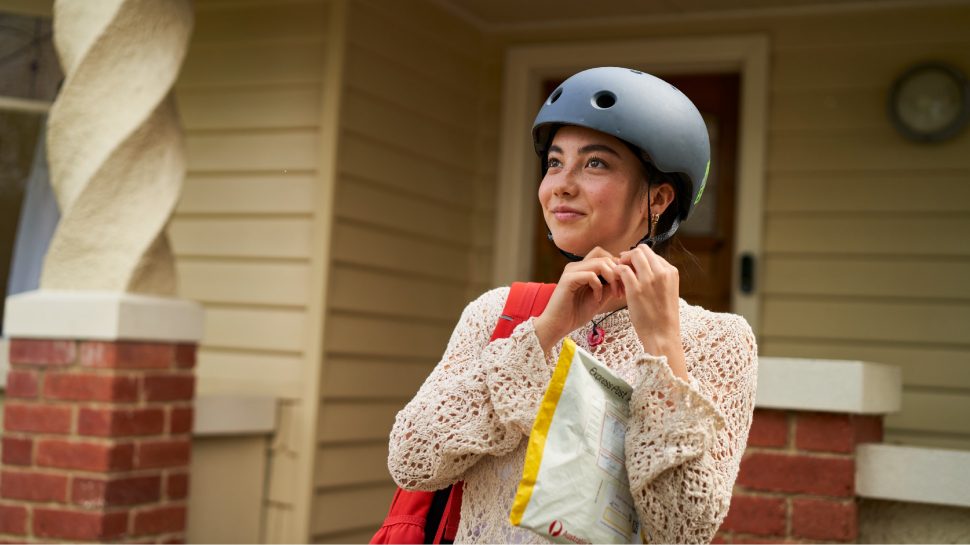Why transparency is the new gold standard in sustainability marketing
Sustainability matters more than ever for today’s shoppers. To gain and maintain their trust, your brand needs to be completely transparent about your sustainability practices and policies. Here’s how you can embed transparency into sustainability marketing.

ALÉMAIS has set a high benchmark when it comes to sustainability marketing.
Key points
- Fashion brand ALÉMAIS leads by example when it comes to sustainability marketing.
- To build trust and avoid accusations of greenwashing, embed transparency into your marketing messages.
- Back up your sustainability claims with data, facts and figures.
ALÉMAIS shares its sustainability journey
When it comes to sustainability, ALÉMAIS wears its heart on its exquisitely embroidered sleeve. The artisanal Australian fashion label describes itself as “a brand striving for more responsible and sustainable practices within a changing industry … creating and curating a collection that supports artisanal communities, that reduces environmental impact and treats its suppliers with honesty and respect.”
To get there, the team at ALÉMAIS know the importance of transparency—particularly when it comes to marketing.
Kelly Elkin, Head of Environmental and Social Impact at ALÉMAIS explains. “Our customers are educated women who care about the environment and want to make conscious choices. They appreciate that we are specific with our information, as opposed to making general claims.”
To realise this goal, the ALÉMAIS website clearly spells out the many ways the brand has a positive impact on people and the environment—from the traceability and social compliance of suppliers to the company’s work in mapping and reducing carbon emissions.
“Traceability and transparency are key to accountability. It’s important for us to be able to highlight the specific actions that we have achieved, and we get a positive response from customers by doing so,” she says.
ALÉMAIS has set a high benchmark when it comes to sustainability marketing. You can follow their lead—read on for things to keep in mind and tips for getting started.
Shoppers seek out authenticity
More and more shoppers are choosing to buy from sustainable brands that have a positive impact on people, the planet and animals. In fact, 74% of consumers say sustainability and ethical practices influences their shopping decision to some extent . And, as they become more astute, they are getting much better at unpicking potential holes in a brand’s sustainability claims.
It’s why greenwashing will get you nowhere. These deceptive marketing tactics might make your brand look good in the short term, but you’ll inevitably get called out—and you’ll lose your customers’ trust - or worse, face investigation for making inaccurate claims. So, before you use vague or misleading language like “natural” or “eco-friendly” that you can’t back up with facts, or before you plaster your marketing with “green” imagery, think hard about how you can prove your claims.
To avoid any accusations of greenwashing, you should commit to positive sustainability practices and be completely transparent with customers about your journey.
How to become a more transparent brand
You can share your sustainability journey with customers through your website, social media and other marketing channels. Here are some key tips to keep in mind when doing so:
- Focus on data and facts
Your brand should provide concrete data and evidence to support your sustainability claims, just like ALÉMAIS does when it explains the traceability of its suppliers. Use metrics like emissions reductions, recycling rates or water conservation figures, for example.
- Be clear and specific
Instead of labelling your products with vague terms like “eco-friendly”, “made with recycled materials” or “sustainable”, clearly explain which aspects of your product, packaging, or operations are sustainable and why.
This extends to your supply chain and sourcing practices, too.
- Embrace vulnerability
Share the challenges you’ve encountered on your journey and acknowledge areas where you can still improve. Ideally, you can also show how you're working to overcome them.
- Get certified
Increasingly, brands are seeking independent verification of their sustainability claims through certifications from recognised organisations like B Corp. It’s an instantly recognisable way to add credibility to your sustainability claims.
- Encourage open dialogue
Respond to questions and concerns promptly and openly. Use feedback to refine your sustainability practices and marketing messages.
Remember, just like your sustainability journey is ongoing, so too are your efforts to become more transparent with marketing. Continually seek out ways to build upon your sustainability story so that your brand becomes synonymous with sustainability in your customers’ eyes.
Ready to elevate your business in 2024?
Ready to elevate your business in 2024?
The free 2024 Inside Australian Online Shopping: eCommerce Industry Report is now available. Uncover valuable insights from the previous year and stay ahead of the game.



